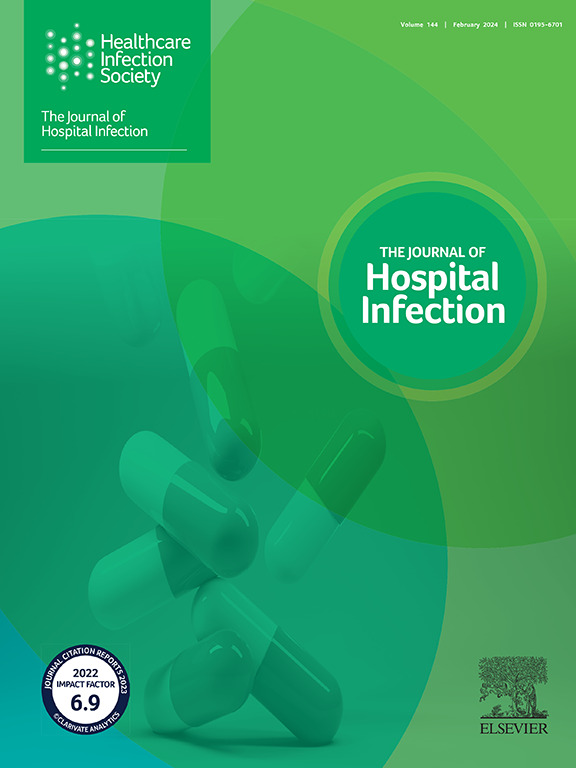Pharmacists’ perspective of antimicrobial stewardship programmes in the primary care setting in São Paulo
IF 3.1
3区 医学
Q1 INFECTIOUS DISEASES
引用次数: 0
Abstract
Background
Antimicrobial stewardship programmes (ASPs) are essential to tackling antimicrobial resistance, particularly in primary care, where most prescribing occurs. Pharmacists play a key role in ASPs through patient education, prescription monitoring, and promoting appropriate use. This study assessed the status of ASPs in primary healthcare centres (PHCs) in São Paulo state from the pharmacists' perspective.
Methods
A cross-sectional survey was conducted between June 2023 and January 2024 among pharmacists working in PHCs across São Paulo. The questionnaire, based on CDC and ANVISA guidelines, addressed demographics, PHC characteristics, ASP activities, and pharmaceutical interventions. Descriptive statistics were used.
Results
Of 201 responses, 189 were eligible, representing PHCs in 68 cities. Most pharmacists (75%) had postgraduate education, and 70% worked in centres serving over 500 patients. Although 79% of PHCs used electronic medical records, only 32% had written ASP policies and 29% monitored antimicrobial use. Diagnostic resources were limited; respiratory virus tests were the most available (43%). Educational activities on antimicrobial use occurred in 26% of PHCs. Pharmaceutical interventions were reported by 77% of pharmacists, mainly related to dosage (54%) and treatment duration (25%), with high prescriber acceptance (≥80% in 34% of cases).
Conclusions
This study identified strengths and gaps in ASP implementation across PHCs. While improvements were seen in infrastructure and pharmacist training, key limitations remain in policy development, diagnostics, prescriber support, and public education. We recommend: (1) establishing local ASP policies, (2) expanding access to rapid diagnostics, (3) continuing education for prescribers and pharmacists, and (4) public awareness campaigns tailored to primary care.
药剂师对圣保罗初级保健机构抗菌药物管理项目的看法。
背景:抗菌素管理规划(asp)对于应对抗菌素耐药性至关重要,特别是在大多数处方发生的初级保健中。药剂师通过患者教育、处方监测和促进适当使用,在asp中发挥关键作用。本研究从药剂师的角度评估了圣保罗州初级卫生保健中心(PHCs) asp的状况。方法:于2023年6月至2024年1月对圣保罗市初级保健医院的药师进行横断面调查。该问卷基于CDC和ANVISA指南,涉及人口统计学、PHC特征、ASP活动和药物干预。采用描述性统计。结果:在201份回复中,189份符合条件,代表68个城市的初级保健医院。大多数药剂师(75%)受过研究生教育,70%的药剂师在服务超过500名患者的中心工作。尽管79%的初级保健中心使用电子医疗记录,但只有32%的初级保健中心有书面ASP政策,29%的初级保健中心监测抗菌药物的使用情况。诊断资源有限;呼吸道病毒检测的可用性最高(43%)。26%的初级保健医院开展了抗微生物药物使用教育活动。77%的药剂师报告了药物干预措施,主要与剂量(54%)和治疗时间(25%)有关,处方者接受度高(34%的病例≥80%)。结论:本研究确定了PHCs在ASP实施方面的优势和差距。虽然在基础设施和药剂师培训方面有所改善,但在政策制定、诊断、处方支持和公共教育方面仍然存在主要限制。我们建议:(1)建立地方ASP政策;(2)扩大获得快速诊断的机会;(3)对开处方者和药剂师进行继续教育;(4)针对初级保健开展公众意识宣传活动。
本文章由计算机程序翻译,如有差异,请以英文原文为准。
求助全文
约1分钟内获得全文
求助全文
来源期刊

Journal of Hospital Infection
医学-传染病学
CiteScore
12.70
自引率
5.80%
发文量
271
审稿时长
19 days
期刊介绍:
The Journal of Hospital Infection is the editorially independent scientific publication of the Healthcare Infection Society. The aim of the Journal is to publish high quality research and information relating to infection prevention and control that is relevant to an international audience.
The Journal welcomes submissions that relate to all aspects of infection prevention and control in healthcare settings. This includes submissions that:
provide new insight into the epidemiology, surveillance, or prevention and control of healthcare-associated infections and antimicrobial resistance in healthcare settings;
provide new insight into cleaning, disinfection and decontamination;
provide new insight into the design of healthcare premises;
describe novel aspects of outbreaks of infection;
throw light on techniques for effective antimicrobial stewardship;
describe novel techniques (laboratory-based or point of care) for the detection of infection or antimicrobial resistance in the healthcare setting, particularly if these can be used to facilitate infection prevention and control;
improve understanding of the motivations of safe healthcare behaviour, or describe techniques for achieving behavioural and cultural change;
improve understanding of the use of IT systems in infection surveillance and prevention and control.
 求助内容:
求助内容: 应助结果提醒方式:
应助结果提醒方式:


